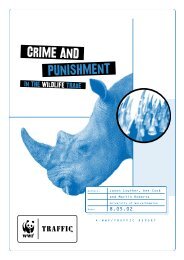Forest renaissance - The role of state forestry in Britain ... - WWF UK
Forest renaissance - The role of state forestry in Britain ... - WWF UK
Forest renaissance - The role of state forestry in Britain ... - WWF UK
You also want an ePaper? Increase the reach of your titles
YUMPU automatically turns print PDFs into web optimized ePapers that Google loves.
FOREST RENAISSANCE • THE ROLE OF STATE FORESTRY IN BRITAIN 1919-2050: A DISCUSSION PAPERWhy do we need a <strong>Forest</strong>Renaissance?Why forests?<strong>Forest</strong>s supply us with more than just timberand fibre. Well-managed, healthy forests alsoprovide biodiversity conservation, soilstabilisation, hydrological functions,mitigation <strong>of</strong> climate change, employment,livelihood opportunities, health and spiritualwellbe<strong>in</strong>g, leisure and recreational space, andcultural and aesthetic values.We start from a weak position. Brita<strong>in</strong> hasundergone deforestation over many centuries:most natural forests have long disappearedand we depend on imports for more than 80per cent <strong>of</strong> timber needs. Although largeforests were re-established <strong>in</strong> the 20thcentury, we rema<strong>in</strong> one <strong>of</strong> the least forestedEuropean countries, and many forests areactually plantations <strong>of</strong> non-native species. Yetthere is a real potential to change. Over amillion hectares – more than a third <strong>of</strong> ourforests – are owned by the <strong>state</strong> <strong>in</strong> England,Scotland and Wales, and managed by <strong>Forest</strong>Enterprise. FE was established <strong>in</strong> the year <strong>of</strong>the Earth Summit, mak<strong>in</strong>g it uniquely placedto implement Brita<strong>in</strong>’s forest commitmentsand develop a new vision and reality for ourforest e<strong>state</strong> and its wider place <strong>in</strong> ruralsociety.This paper follows the decision by m<strong>in</strong>istersto establish new devolved arrangements forthe management <strong>of</strong> <strong>state</strong> woods and forests<strong>in</strong> England, Scotland and Wales. This will seethe creation <strong>of</strong> three new <strong>Forest</strong>ryCommission agencies with new devolvedremits dur<strong>in</strong>g 2003. This paper seeks toexplore what <strong>state</strong> <strong>forestry</strong> has achieved s<strong>in</strong>cethe 1992 Earth Summit and how the newagencies could respond to a new agenda forthe delivery <strong>of</strong> truly susta<strong>in</strong>able <strong>state</strong> forestswhich better meet the needs <strong>of</strong> people <strong>in</strong> the21st century.What did we commit to atand beyond the firstEarth Summit?In Rio, governments committed to susta<strong>in</strong>abledevelopment that <strong>in</strong>cluded revers<strong>in</strong>genvironmental degradation. <strong>The</strong> Summitrecognised that forests are central todevelopment, with more than a billion peopledepend<strong>in</strong>g directly on timber and non-timberforest products. <strong>The</strong> <strong>Forest</strong> Pr<strong>in</strong>ciples and theAgenda 21 strategy agreed <strong>in</strong> Rio laid out stepsto <strong>in</strong>tegrate forests <strong>in</strong>to susta<strong>in</strong>abledevelopment. Countries responded byestablish<strong>in</strong>g programmes <strong>of</strong> their own,reflect<strong>in</strong>g particular circumstances and needs.<strong>The</strong> Convention on Biological Diversity requiresgovernments to develop national biodiversitystrategies and action plans. In 2002 partiesadopted a forest action programme, <strong>in</strong>clud<strong>in</strong>gapply<strong>in</strong>g the ecosystem approach tomanagement, mitigat<strong>in</strong>g impacts <strong>of</strong> climatechange, restor<strong>in</strong>g degraded forests andprotect<strong>in</strong>g threatened species. <strong>The</strong> FrameworkConvention on Climate Change promotesrenewable energy and the susta<strong>in</strong>ablemanagement and enhancement <strong>of</strong> s<strong>in</strong>ks forgreenhouse gases, <strong>in</strong>clud<strong>in</strong>g forests. <strong>The</strong>associated Kyoto Protocol allows some<strong>of</strong>fsett<strong>in</strong>g <strong>of</strong> emissions through absorption <strong>of</strong>carbon dioxide by forests.Specifically, Brita<strong>in</strong> is committed to:• Strengthen <strong>in</strong>stitutions• Provide multiple goods and servicesfrom forests• Take care <strong>of</strong> the wider environment• Protect and restore biodiversity• Conserve and enhance landscape andheritage• Provide recreational opportunities• Strengthen demand for forest products• Facilitate rural development• Raise awareness and understand<strong>in</strong>g andtransfer know-how“Over a million hectares– more than a third <strong>of</strong>our forests – are ownedby the <strong>state</strong>...”7



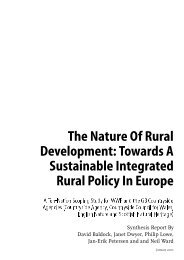
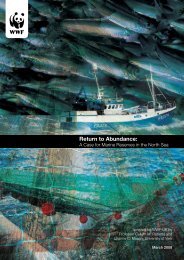
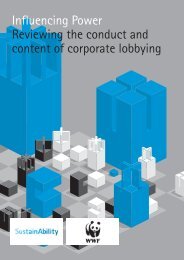
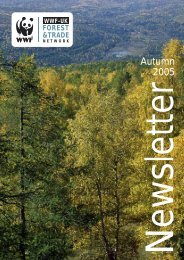

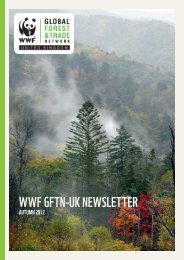


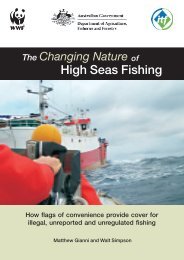
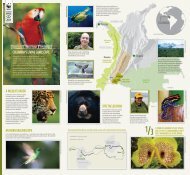
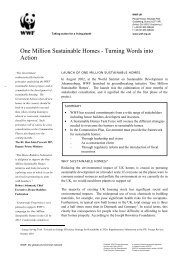
![[PDF] Causes for concern: chemicals and wildlife - WWF UK](https://img.yumpu.com/31929970/1/184x260/pdf-causes-for-concern-chemicals-and-wildlife-wwf-uk.jpg?quality=85)
